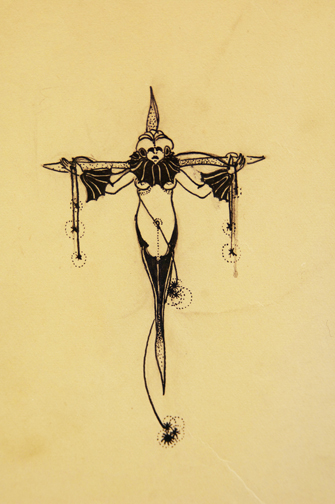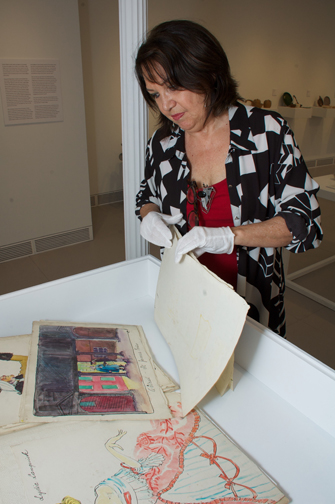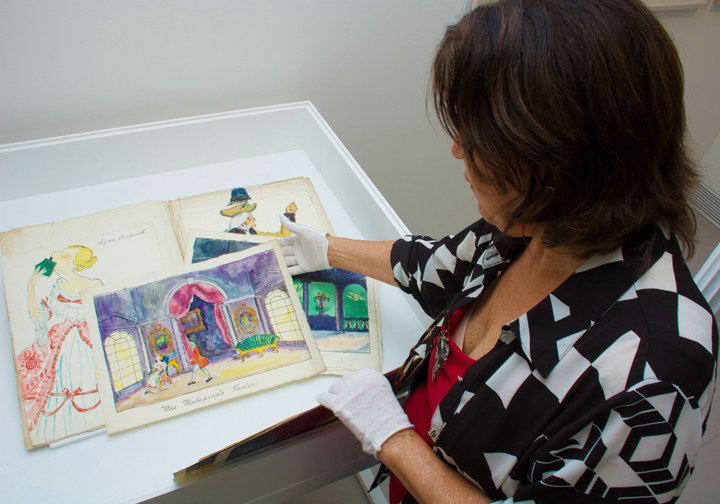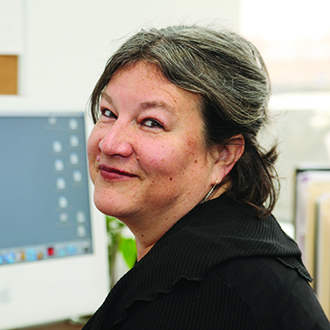In quietly elegant galleries steps away from the banks of the Hudson River, a pair of exhibits puts the spotlight on three 20th-century pioneers in the worlds of craft and design.
Though all are now gone, these Garrison residents spent their lives doing work that continues to influence not only the region but also the world.
Those legacies are most artfully explored and celebrated in “The Vision of One — The Power of Two: Champions of Millions,” which continues through Nov. 8 at the Riverside Galleries of the Garrison Art Center.
A SINGULAR VISION
“The Vision of One” is a compact survey of the accomplishments of Aileen Osborn Webb (1892-1979), who was a leading force in the world of crafts. It is curated by Geoffrey Platt with consultation from Paul Smith, director emeritus of the Museum of Arts and Design (MAD), and with assistance from the American Craft Council staff.
Born in Garrison, Webb was raised by an art collector father and philanthropist/social reformer mother. Throughout her privileged life, she carried a sense of wanting to give back, which she accomplished most famously through her passion for crafts. She discovered and was dedicated to promoting the work of skilled makers that she found locally — her Depression-era formation of Putnam County Products enabled artisans to have a viable source of income — but would go on to a much broader platform.
In 1940, Webb founded New York City’s America House, which would both help sell and exhibit fine craft creations, eventually leading to the founding of the American Craft Council, the School of American Craftsmen and the World Crafts Council. The opening of the Museum of Contemporary Crafts, now MAD in Manhattan, would remain, perhaps, Webb’s most noted effort.
A testament to Webb, she was the subject of this past winter’s exhibition, “What Would Mrs. Webb Do? A Founder’s Vision,” at MAD (and featured in WAG’s January issue).
A PAIR MOST POWERFUL
“The Power of Two,” curated by Carinda Swann and Maryann Syrek, continues the Garrison celebration, presenting a look at the partnership of Mary Einstein Wright (1904-1952) and Russel Wright (1904-1976).
For many in the region, the couple’s legacy is most visibly represented through Manitoga: The Russel Wright Design Center. The nearby National Historic Landmark today is open to the public, allowing visitors to explore the home, studio and garden of the Wrights.
Russel Wright, the iconic industrial designer, might be the one more familiar to many, as Russel Wright creations were a part of most every mid-century household.
Here a collection of his early illustrations and costumes for the theater are unveiled along with rare examples of his better-known tableware and home accessories, but the exhibit also shines a particularly strong, and overdue, spotlight on the contributions of Mary Wright. A treasure trove of examples here clearly presents her as an incredibly talented artist herself. The exhibition takes a visitor from her earliest sketches to her own designs for items such as creamers, platters and casserole dishes.
“The thing about Mary’s work is it’s super rare because it wasn’t mass-produced,” says Swann, also the center’s executive director.
From those intricate early pen-and-ink drawings — a copy of a letter from Alfred Stieglitz to her aunt praises Mary’s work, “… How well I knew that they were not to be looked at casually! The drawings are astounding. The paintings extraordinary.” — through her design and then marketing work with her husband, we get a glimpse into this figure that history has too long overlooked.
Spend time looking at illustrations and tableware, books and drawings. Travel with the Wrights from their early days — Mary’s in New York City and Russel’s in Cincinnati — to their time together at the Maverick Art Colony in Woodstock and then, a life first in New York City and later, Garrison.
Together, the duo’s collaborations, which included writing the iconic “Guide to Easier Living,” broke new ground in mid-century America, efforts propelled by Mary’s unwavering dedication.
“It launched an astonishing level of lifestyle branding,” Swann says. “They were the first, and Mary’s marketing was what did that.”
The exhibition draws on generous loans from Ann Wright and Laura and Gary Maurer as well as consultation with Allison Cross, director of Manitoga.
Ann Wright says the exhibition that serves as debut for so many of her mother’s earliest drawings — stored for some 90 years and never before displayed — has proven successful in her eyes.
“I think it’s great. I don’t know exactly what I envisioned because it was the first time we had taken a risk on Mary.”
But, she adds, glancing over the gallery space, it “exceeded” any hopes she had for the show.
“It’s very powerful.”
The Garrison Art Center is at 23 Garrison’s Landing. For more, visit garrisonartcenter.org.










